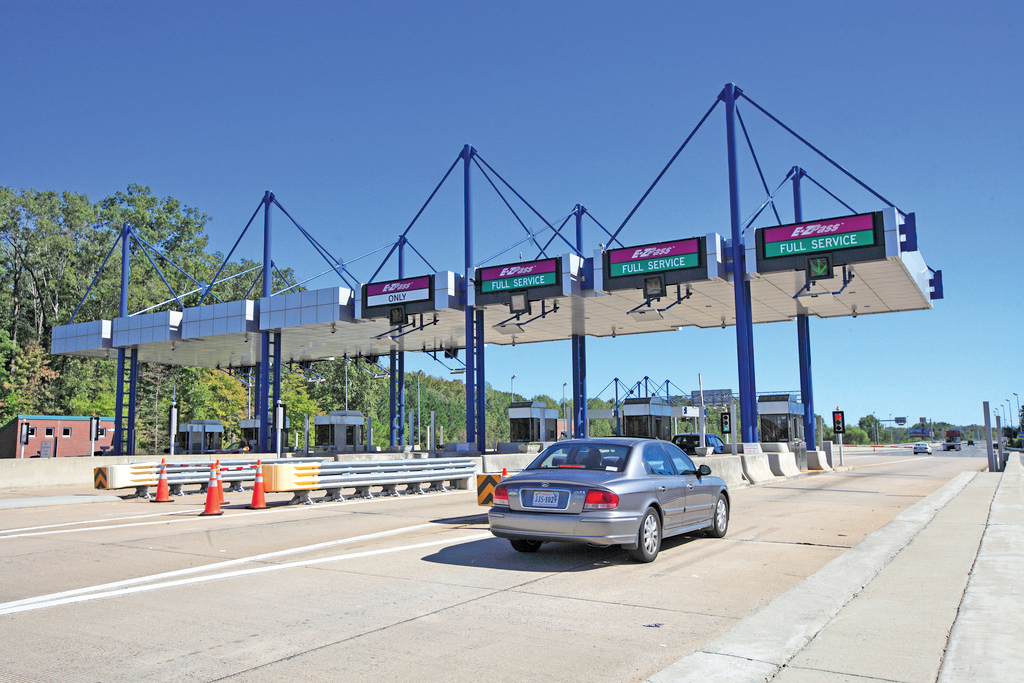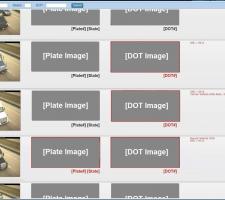
An online truck pre-clearance system is allowing enforcement to be better targeted towards offending vehicles.
Utah is the latest US State department of transportation (DOT) to deploy HELP (Heavy Vehicle Electronic License Plate) Inc’s new 360SmartView electronic truck screening and sorting system at vehicle inspection sites to speed up compliance checks. The initial locations will be at Perry on Interstate 15 (I-15), which were the first sites in the state to implement HELP’s PrePass transponder-based vehicle identification system.This gives participating commercial vehicles pre-clearance to bypass designated weigh stations while travelling at highway speed. The new cloud-based technology extends the concept by giving enforcement officials access to a single ‘360-view’ display of each truck’s current safety compliance status, as well as company and driver credentials, enabling them to decide whether or not to selec it for detailed checks.
The system expands federal motor carrier (FMC) data with input from over 90 federal and State sources that do not currently report to the US FMC Safety Administration (FMCSA)’s commercial vehicle information or safety and fitness electronic records systems. It aims to address the fact that, at most US interstate highway inspection sites, State enforcement officers process between two and six trucks per minute, with resources enabling them to check only 1% of these. As with PrePass, the technology allows compliant carriers to carry on, leaving officers to focus on suspect vehicles.
Utah’s decision follows the publication by the Montana DoT (MDT) of the first year’s results of its deployment of a 360SmartView system at its Billings eastbound inspection site on I-90. It cost US$450,000, installed and tested.
COST: US$450,000 per unit
PROJECTED INCREASE IN FINE REVENUE: US$270,000-plus
BENEFITS AFTER ONE YEAR:
• 23% increase in violations detected per inspection
• 25% increase in vehicles falling within the FMCSA’s ‘Inspect’ category
• 50% increase in temporary fuel permit sales
• 88% increase in temporary vehicle registration permit salesResults include: a 23% increase in violations detected per inspection; a 25% increase in vehicles falling within the FMCSA’s ‘Inspect’ category; and increases in revenue from temporary fuel and vehicle registration permit sales of 55% and 88% respectively. The cumulative annual increase was worth more than US$28,000, to be applied to highway maintenance.
Montana’s Motor Carrier Services (MCS) Operations Bureau chief Dennis Hult told
Of the 500,000-plus vehicles passing annually through Billings, data from the 360SmartView system conservatively estimates that more than 10,000 are not in compliance with US Unified Carrier Registration (UCR) credentials. Based on the new ability of enforcement personnel to screen about 20% of these, MDT projects a potential increase in fine revenue of more than US$270,000 annually.
360SmartView has been developed by
By year end the Bureau plans to deploy two mobile systems mounted on pull-behind trailers. These will work with existing MDT weigh-in-motion systems.
Conceived in 1983, HELP now has nearly 450,000 interstate trucks enrolled in PrePass, which is in operation at over 300 inspection sites in 31 US States. It funds the installation of the basic equipment at many State inspection sites with the aid of monthly service charges paid by voluntarily participating trucking companies.
Its PrePass Plus enables drivers equipped with fusion transponders to pay tolls on roads and bridges that are part of the E-ZPass system. Twenty years old in August 2013, this interoperable EFC scheme embraces toll operations in 15 US States.
Tokyo challenges
There will be five International Benefits, Evaluation and Costs (IBEC) Working Group sessions at the 2013 ITS World Congress (Tokyo 14-18 October). Among the key issues being discussed will be how to cut road deaths in two continents; compare ITS evaluations globally; and the realistic evaluation of the benefits of cooperative ITS.
Working as a cooperative, IBEC seeks to coordinate and expand international exchanges on ITS techniques and evaluations. It wants easier access to information, so that decision makers can make better informed judgements on ITS investments.
IBEC Management Committee member William Johnson says: “IBEC has found its cooperative relationship with the annual ITS World Congresses gives it ideal venues to achieve its goals in a worldwide context. Congresses, too, benefit from a relationship that brings forward leading-edge topics for open and constructive debate.” In ITS – Making Cost-Benefit Analysis Cases for Policy, Operator and Traveller (SIS41), the floor will consider whether separate cost/benefit ratios for each sector would encourage wider ITS investment and deployment.
In Comparing ITS Evaluation Methodologies Internationally, the speaker will examine the challenges to, and common denominators for, making distinct approaches more easily comparable. Why (not) Evaluate ITS? will look at the barriers to having ITS evaluations on the scale needed to justify investment and how can these be overcome? Finally, Evaluation of Cooperative and Automated Driving will ask if the projected benefits are likely to be realised, how drivers will behave and what happens when there is a crash?
The Management Committee is inviting all members present in Tokyo to its Annual General Meeting, which will be held on 16 October at 0730 hours in the ITS America congress office.
• Further information from Patty Fusaro at <%$Linker:
<%$Linker:
System assessments
USDOT has recently evaluated the safety implications of the electronic screening of potentially higher-risk carriers and drivers. It found that selection for manual inspection is successful in avoiding about 0.7% of the 441,000 truck-related crashes that occur each year.
With e-screening to give officials decision support, the success rate rises to between 3.5% and 4.8 %, equating to between 15,000 and 21,000 crashes avoided. USDOT calculates the associated cost reduction at between US$1.8bn and US$2.6bn a year.
A 2012 HELP survey of over 800 US motor carriers found 84% ranking electronic preclearance as the most important technology for boosting industry efficiency. Over 80% also expressed strong support for the future integration of onboard transponder technology to include other applications such as hours of service and real-time vehicle operational monitoring.
At the same time, fewer than 20% showed interest in using smartphone applications, with nearly 45% saying they did not want active devices in their vehicles. The findings reflect concerns over driver distraction and data privacy.






